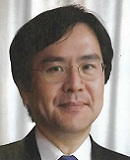16~17世紀、ポルトガル・スペインの両国が大洋に乗り出した、いわゆる「大航海時代」。
それは、日本の戦国時代の歴史が、ヨーロッパのルネサンス・ヒューマニズム文化の歴史に「接続された」注目すべき時代である。
この講義では、日本はどのように認識され、地理上位置づけられたのかを出発点とし、その後、来日したヨーロッパ人がもたらした文化は日本にどのような作用をもたらしたのかを考察する。
当時ヨーロッパはルネサンスとヒューマニズムの新しい文化の開花期。
戦国の日本とそのヨーロッパの文化が「接続」し、世界史上でも特異な「交流」の成果を示した。
江戸幕府の統制において終焉した、花火のような文化交流であったとはいえ、そこには、日本人とは何か、世界と日本を考える上での数多くのヒントが見いだされる。
第1週から第3週にかけてその歴史的なプロセスをたどり、第4週には、特にキリシタン版の歴史に注目する。
キリシタン版は、日本初の金属活字印刷で、朱墨二色刷り・楽譜印刷を含む。
ヨーロッパで作らせた行草体仮名漢字活字を和紙に組版・印刷し、ついには独自の活字鋳造に至るキリシタン版の技術革新を、上智大学キリシタン文庫が所蔵している現存する最古のキリシタン版や、日本初の二色刷り楽譜を持つキリシタン版「サカラメンタ提要」などの貴重資料を用いながら、精細な観察に基づいて辿る。
第1週:大航海時代の日本:ヨーロッパと日本の「接続された歴史」
- 日本を中心とした「交流史」の意味
- 世界に発信された「日本情報」(マルコ・ポーロからザビエルまで)
- 世界に認識された「日本」(地図上のZipang)
- ポルトガルとスペインの世界:「教皇分界線」と「トルデシリャス条約」
- ポルトガルの東洋進出の諸拠点(ホルムズ・ゴア・マラッカ・マカオ)
- フランシスコ・ザビエル(2つの視点)とイエズス会の世界宣教
- ザビエルを迎えた日本人とその背景(畿内の政治、経済、宗教)
- ザビエル書簡およびイエズス会「日本報告」の全容
- 来日したイエズス会宣教師(フロイス・ヴァリニャーノ)と出版された刊行物
第2週:日本の中のヨーロッパ:キリシタン大名領豊後と大友宗麟
- 豊後大友宗麟(キリシタン大名の一側面)
- 豊後府内病院とその周辺
- 病院を手伝った日本人(日本最初のボランティア):慈悲の組の設立(1)
- 豊後の出来事の意味(病院と死者の埋葬)日本の社会史上の意義
- 豊後で始まったキリシタンのネットワークという形
- キリシタンの信徒共同体の発想は、なぜ日本社会に定着したか
- 実際にひとつの文書を社会史の資料として読んでみる(罰則規定)
第3週:文化邂逅のプランナー:A.ヴァリニャーノの「順応」方針
- アレッサンドロ・ヴァリニャーノという人物
- 「順応」方針にいたるまでの葛藤:フランシスコ・カブラル
- 「日本年報」制度の創設
- 日本最初のヨーロッパ式教育機関:コレジヨ、セミナリヨ
- コレジヨの教科書:『イエズス会講義要綱』の作成
- 天正遣欧使節プロジェクトの立案と実行
- 活版印刷機による文書宣教の創設:キリシタン版
- 秀吉の九州平定とヴァリニャーノ:キリシタンベルト論
第4週:キリシタン版: 日本印刷・出版史上の位置づけ
- キリシタン版の特徴
- キリシタン版の技術の由来
- キリシタン版を超接写で見る
- 当時の日本の出版物の技術・キリシタン版の技術
- 超接写から見るキリシタン版の印刷技術
- 前期版活字の誕生とヴァリニャーノ・天正少年使節
- 後期活字の誕生のきっかけとなったイタリック
- 試行錯誤と失敗、改良
- キリシタン版の意図
ga029: Japan in the Age of Great Voyage: History of Cultural Exchange Between Europe and Japan (Historia)
In the 16th and 17th centuries, the two countries of Portugal and Spain set out for exploring the ocean, thus the name of the Age of Great Voyage. From the Japanese perspective, it is an age worth paying attention to, because the Japanese history during The Age of Warring States was “linked” to the European history of Renaissance humanism culture.
The course will first look at how Europe viewed Japan and positioned it geographically. We will then explore how Japan was influenced by the culture brought by the Europeans who came to Japan.
Back then, a new culture characterized by Renaissance and humanism was emerging in Europe.Japan in The Age of Warring States “linked” with the European culture at the time, producing a type of exchange that is rarely seen in world history.
This cultural exchange was, however, put to an end by the command of the Edo Shogunate. Like fireworks, the exchange flourished but was short-lived. And yet, it provides us with numerous clues as to who the Japanese are, and where Japan stands in relation to the rest of the world.
During the first three weeks, we will trace the historical developments of the cultural exchange in those days. The fourth week will focus on the Early Christian Mission Press, or "Kirishitan-ban" in Japanese.
The Jesuit Mission to Japan brought a printing machine from Europe, and produced in Japan more than 40 titles of "Kirishitan-ban" by metal type printing in the late 16th and early 17th centuries, among which are the first examples of red and black printing, as well as music.
The early versions of the Japanese Kana and Kanji metallic movable types were created in Europe, and brought to Japan together with the Latin types. Printing by metallic movable types on Japanese papers should have involved quite an innovation. The Jesuit Mission to Japan went on to design much more sophisticated Kana/Kanji cursive style movable types, which were then used extensively in the "Kirishitan-ban" press.
In this course, we are going to examine the very first printed example of "Kirishitan-ban", "Prayers" , as well as the most complicated example of the Jesuit Mission Press in Japan, "Manuale ad sacramenta ministranda", which has music and printing in color (red and black), both in the Sophia collection.
Week 1: Japan in the Age of Exploration: Europe and Japan - A “Linked History”
- Meaning of the “history of exchange” focusing on Japan
- “Information about Japan” which was disseminated to the world (from Marco Polo to Xavier)
- “Japan” as a country recognized globally (Zipang on a map)
- The spheres of Portugal and Spain: “the Papal Line of Demarcation” and “the Treaty of Tordesillas”
- Portuguese strongholds for advancement into the Orient (Hormuz, Goa, Malacca, and Macau)
- Francisco de Xavier (his two perspectives) and the global mission of the Society of Jesus
- The Japanese who accommodated Xavier and their background (politics, economy and religions in Kinai [five prefectures in the Kyoto area])
- Xavier's correspondences and an overview of the “Reports on Japan” by the Society of Jesus
- Jesuit missionaries to Japan (Frois and Valignano) and their publications
Week 2: Europe within Japan: Bungo as a Kirishitan Daimyo Territory
- Otomo Sorin in Bungo (as a Kirishitan daimyo)
- Funai Hospital in Bungo and its surroundings
- The Japanese who helped the hospital (first volunteers in Japanese history): formation of the Jihi no Kumi (Confraternity of Misericordia) (1)
- Meaning of the events in Bungo (hospital and burial of the dead) - significance in Japanese social history
- Kirishitan networks which originated in Bungo
- How did the idea of a Kirishitan community get established in Japanese society?
- Reading a sample document (punitive clause) as reference material of social history.
Week 3: Planners of Cultural Encounter: A. Valignano and His “Accommodation” Policy
- Who was Alessandro Valignano?
- Issues until the “accommodation” policy was adopted: Francisco Cabral
- Establishment of the “Annual Report on Japan” system
- First European educational institutes in Japan: collegio and seminario
- Textbooks at collegio: creation of the “Jesuit Outline of Lectures”
- Planning and execution of the Tensho Embassy to Europe project
- Launch of missionary publications through typographic printers: Kirishitan-ban
- Hideyoshi taking control over Kyushu, and Valignano: the theory of the Kirishitan belt
Week 4: Kirishitan-ban: Significance in the Printing and Publishing History of Japan
- Features of Kirishitan-ban
- Technological origin of Kirishitan-ban
- Viewing Kirishitan-ban in macrophotography
- Implication of the Kirishitan-ban in the history of publication in Japan
- Analyzing printing technology of Kirishitan-ban in macrophotography
- Invention of the types for early Kirishitan-ban and Valignano / Tensho Boy Embassy
- Italic type which triggered the invention of latter Kirishitan-ban print types
- Trials, errors, failures, and improvements
- Purpose of Kirishitan-ban
Bio of Lecturers and Staff
Dr. Shinzo KAWAMURA
Professor, Chair of Department of History, Faculty of Humanities, Sophia University.
Director of Kirishitan Bunko Library, Sophia University. Ph.D. in History conferred by Georgetown University, U.S.A. Holding current position since 2011. Philosophy degree awarded by Sophia University. Theology degree received from the Pontifical Gregorian University. Specializes in the history of cultural exchange between Japan and Europe, Kirishitan history, and European Christian history. Author of 『キリシタン信徒組織の誕生と変容-コンフラリヤからこんふらりやへ』 (2003 Kyobunkwan), and 『戦国宗教社会=思想史-キリシタン事例からの考察』 (2011 Chisen Shokan). Wrote and edited 『超領域交流史の試み-ザビエルにつづくパイオニアたち』 (2009 Sophia University Press Publishing Company) and other books. Consultant of authenticity of Christian history for “Gunshi Kanbei”, the historic drama on NHK in 2014.
Masayuki TOYOSHIMA
Professor, Department of Japanese Literature, Faculty of Humanities, Sophia University.
Specializes in missionary linguistics, and Kirishitan philology. Books of his authorship include 「キリシタン版ぎやどぺかどる」 (1987, Seibundo. Publication through a grant by the Ministry of Education), and 「天草版ラテン文典」 (2012, Yagi Shoten. Publication through a grant by the Japan Society for the Promotion of Science). Wrote and edited 「キリシタンと出版」 (2013、Yagi Shoten. Winner of the 35th Award of The Japan Society of Publishing Studies), 「キリシタン版ドチリーナキリシタン」, 「キリシタン版サクラメンタ提要」(2014、Toyo Bunko Zenpon Sosho, Bensei Shuppan), and other books.
Yumi NAKANISHI
Student, Master's (Doctoral) Program in History, Graduate School of Humanities, Sophia University. Part-time staff, Kirishitan Bunko, Sophia University.
Chikako YAMADA
Student, Master's Program in Theology, Graduate School of Theology, Sophia University. Part-time staff, Kirishitan Bunko, Sophia University.





